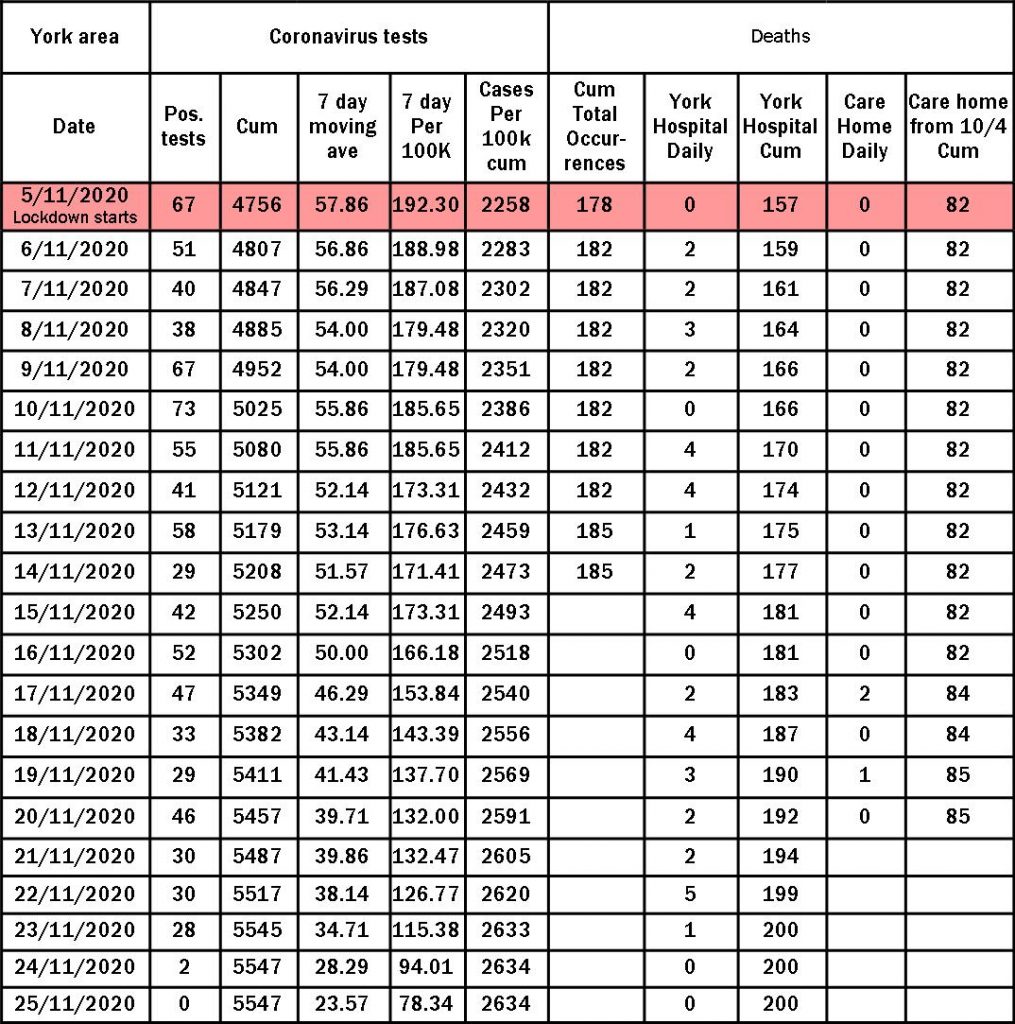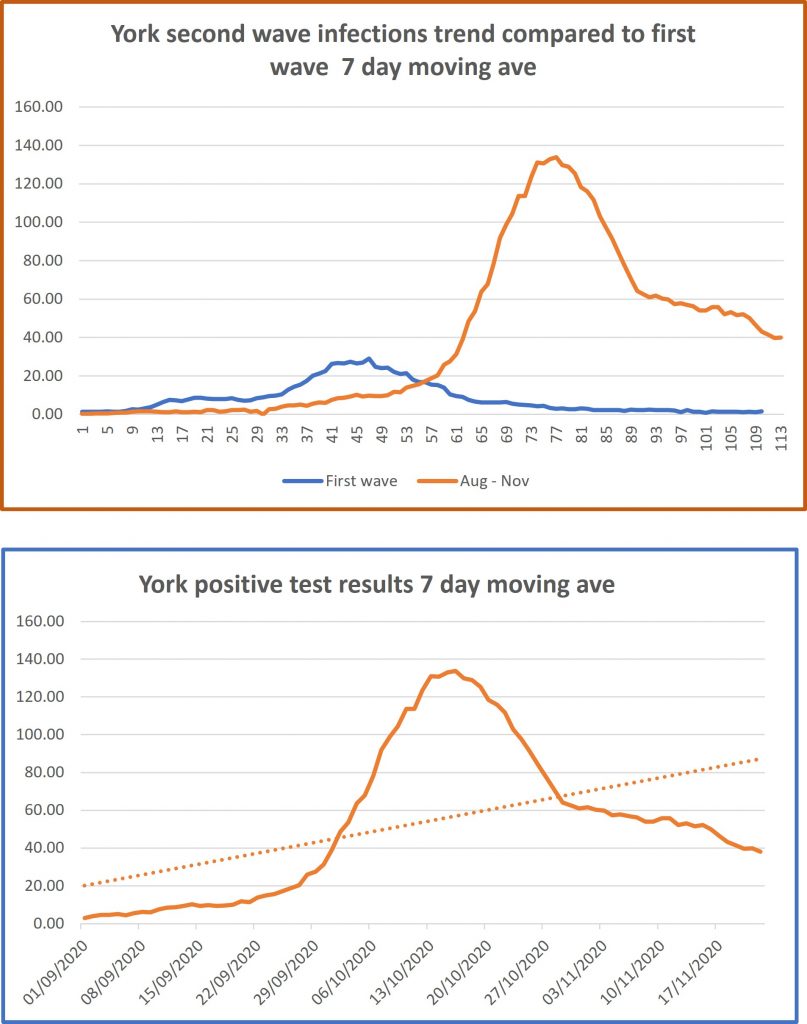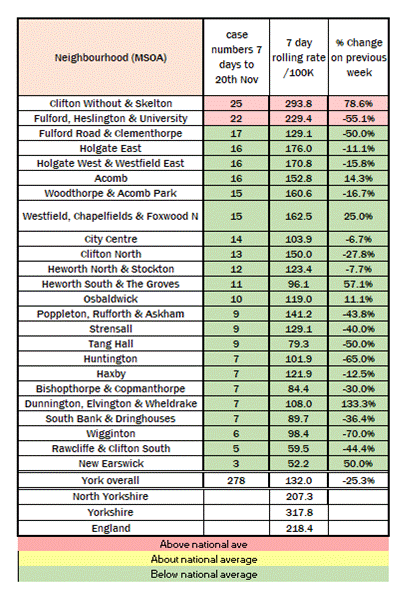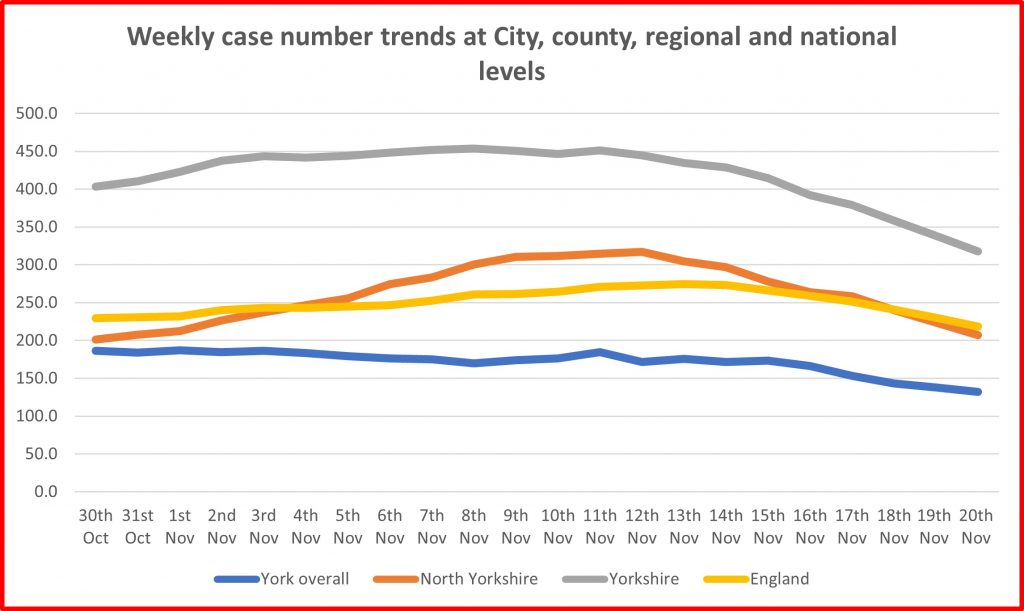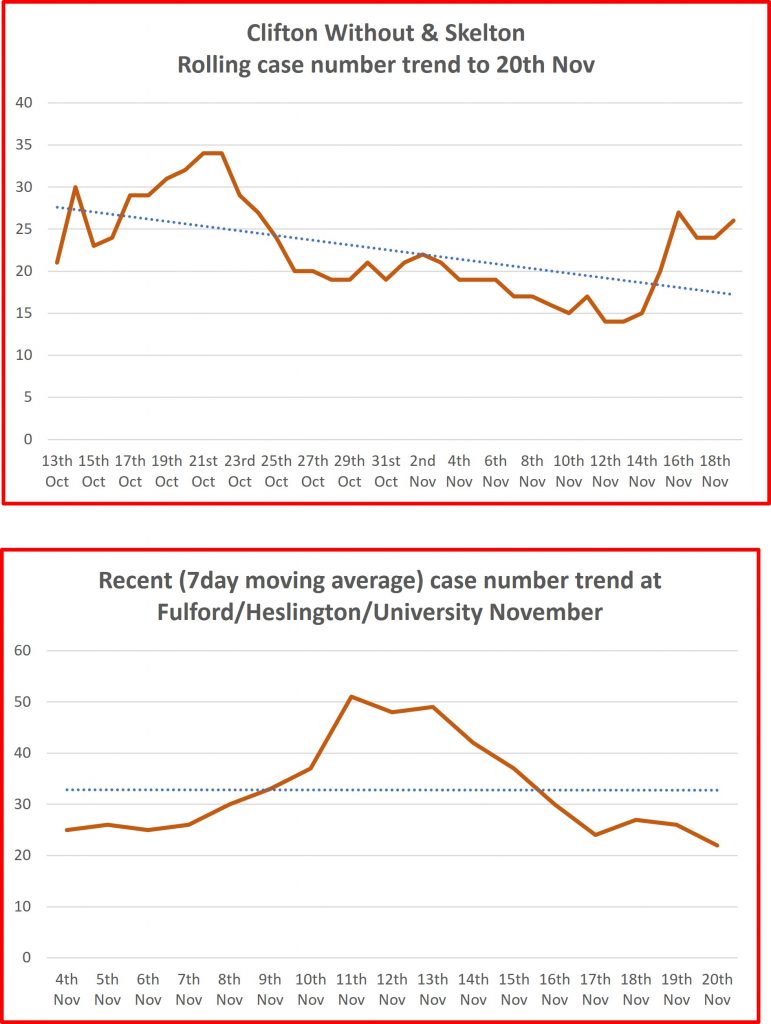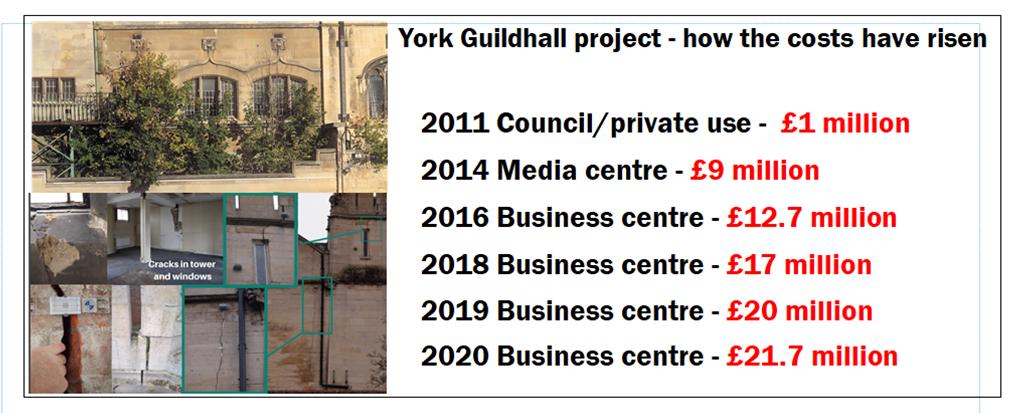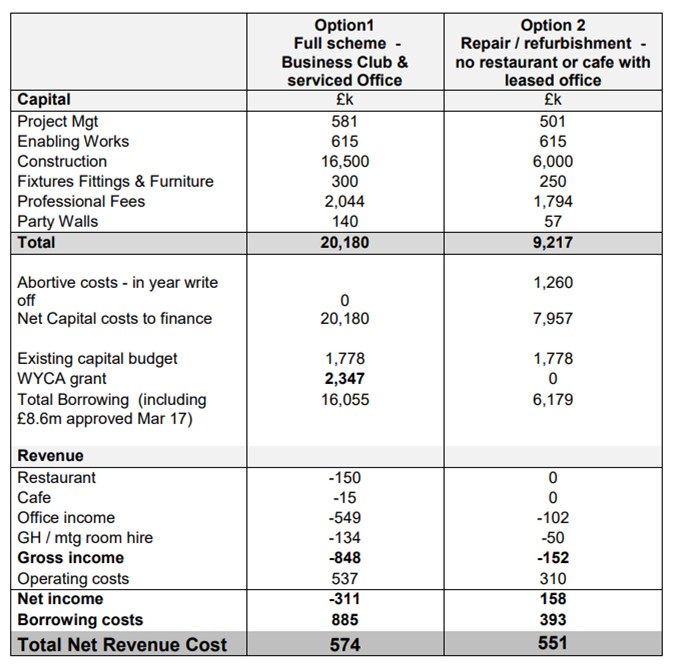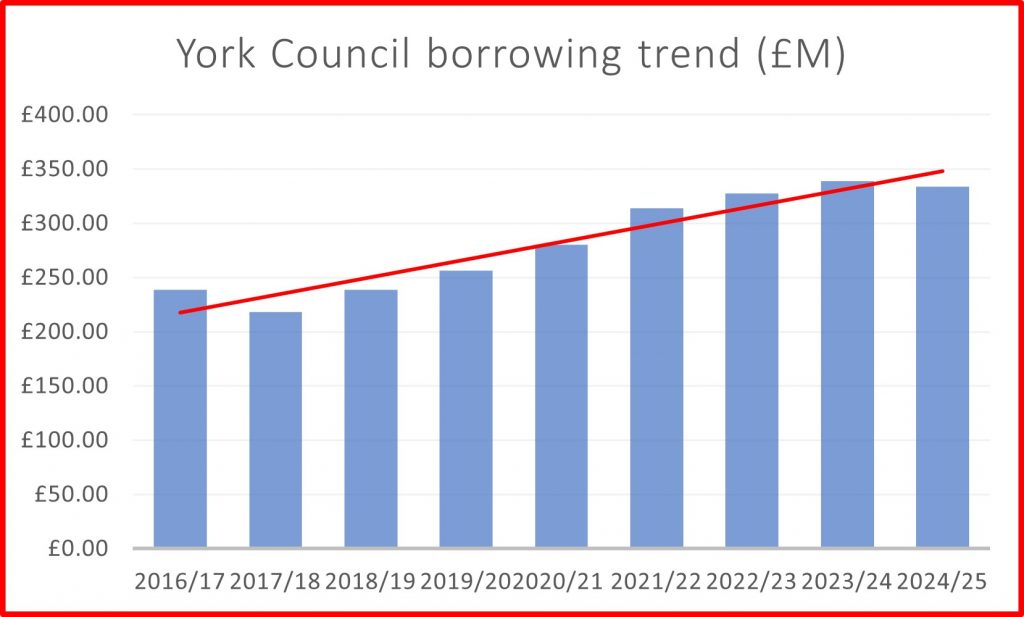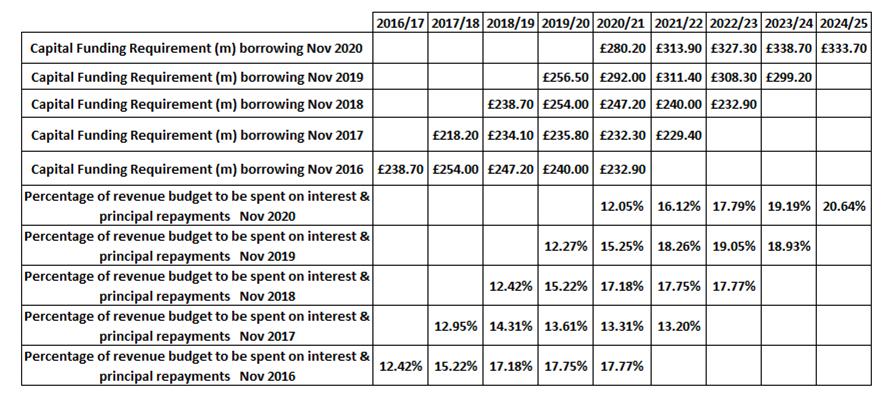Deaths and test results
FOUR (4) additional deaths announced by York Hospital Trust today. 3 occurred on Sunday and one on Monday. This brings the cumulative second wave fatality total to 66 at the York and Scarborough hospitals
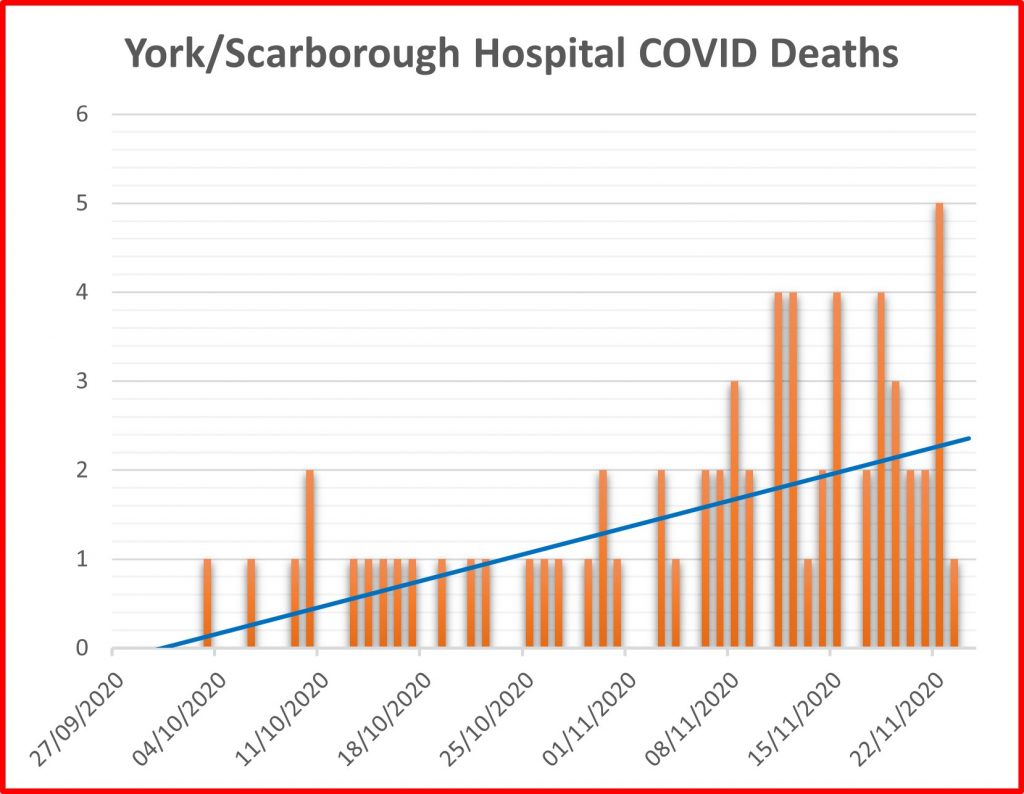
TWENTY NINE (29) new positive test results announced today bringing the cumulative total to 5547
The figures will be looked at with greater interest today as the government is set to announce tomorrow (Thursday) which tier the City will be placed with effect from next Tuesday.
There are some positive indicators
There has been a sustained reduction in case numbers from 57.86 per day when Lockdown was introduced on 5th November to 38.1 today
The City has a lower case rate per 100k head of population than the county, regional and national averages.
Only two neighbourhoods are now above the national average (Heslington and Clifton Without).
On the other hand the case rate at 132.47 is still higher than it was at the peak of the first wave (96.86 on 5th May). 169 residents lost their lives to the virus during the spring and early summer.
We expect the City to be put into Tier1 along with Ryedale and Hambleton. If so we hope it doesn’t encourage the kind of activities which were seen on our streets in September.
